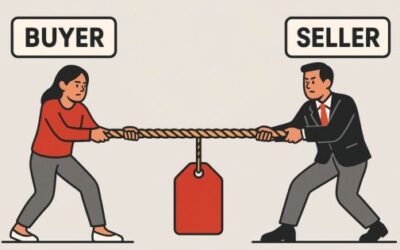Sales training is essential for any business looking to grow and succeed. It empowers sales teams with the knowledge, skills, and confidence to maximize their performance and reach their targets. In this blog post, we’re breaking down the best sales training programs and courses available today, how to choose the right one for your team’s needs, and how to measure its effectiveness in boosting your sales results. Let’s do this!
The Importance of Sales Training
Sales training is crucial for any business looking to maximize their sales performance. Sales training provides sales teams and organizations with the skills training, insight, and approach to more effectively drive revenue and keep abreast of the newest and most effective ways to engage with prospects and buyers.
Effective sales training programs offer a variety of approaches that cater to different skill levels and cover various areas such as discovery, negotiation, overcoming objections, deal management and more. By investing in these programs, businesses can ensure that their sales team is equipped with the latest strategies and techniques that will help them perform at their best. Ultimately, good sales training should result in improved performance for both the individual sellers and the company as a whole.
Benefits of Sales Training Programs
Sales training programs are an essential investment for businesses to enhance their sales team’s performance. Here are some of the key benefits that come from participating in such courses:
- Increased sales revenue:
The most obvious and most measurable benefit of sales training is an increase in revenue. By elevating how sales training participants sell, who they sell to, how they manage the sale, and how they engage with buyers good sales training should result in a discernible and measurable increase in sales.
- Improved forecasting accuracy:
Sales training programs teach participants how to understand their customers’ needs better, communicate effectively with them at every stage of the buying process, build a strong rapport with them, and offer personalized solutions. This approach leads to a better understanding of where buyers are, the barriers to the sales and how to establish improved seller influence. With greater influence on the sale comes improved and more accurate forecasting.
- Higher win rates:
Sales training programs also provide participants with the skills to engage in better discovery, qualification, deal management and negotiation, this provides participants with greater insight and control over the sale thereby improving win rates and minimizing deals lost to no decision and the status-quo.
Sales training is crucial not only because it enhances individual performance but also because it positively impacts overall business growth by building relationships one sale at a time.
Common Sales Training Methods
On-the-job training is a common sales training method that involves learning through hands-on experience. This technique allows trainees to observe and learn from experienced sales professionals while also practicing their own techniques in real-life situations. On-the-job training can be a highly effective way to improve overall performance, as it provides immediate feedback and the opportunity for continuous improvement.
On-the-job sales training is highly effective as it allows for observation, immediate feedback and continuous improvement.
Classroom-style instruction can also be an effective sales training method, providing learners with theoretical knowledge and foundational skills necessary for success in the field. These courses may cover topics such as discovery techniques, sales psychology and change management, and/or problem knowledge and identification. Online courses or modules are another option for sales training programs, offering flexibility and convenience for learners who want to work at their own pace on specific areas of focus such as negotiation tactics or persuasive selling strategies. Regardless of the chosen approach, investing in quality sales courses can help drive improved performance within your organization’s sales team.
Top Sales Training Courses and Programs 21st-Century Sellers
Sales has changed since the inception of sales trainings in the 1960’s, 70’s, 80’s and 90’s. Traditional sales training was based on managing the transaction. Focused on old school criteria like BANT, traditional sales training was very tactical and offered participants a bevy of product-centric tips and tricks to manipulate buyers. These antiquated approaches no longer work. Buyers are far more savvy and are looking for partners and salespeople who understand their business and the problems they are dealing with.
The top courses offering 21st-century, problem-centric selling programs and skills are; Gap Selling Sales Training, Challenger Sales Training, and SPIN Sales Training, These programs offer comprehensive training on various aspects of sales including lead generation, negotiation skills, closing deals and customer relationship management.
1. Gap Selling (powered by A Sales Growth Company)
Yes, we’re a little biased here, however, Gap Selling provides the only sales method based on “change management” and leverages a problem-centric approach that teaches participants how to sell by putting the customer and the customers problem(s) front and center. Gap Selling teaches salespeople to uncover a buyer’s “gap” by diagnosing their current state problems and their desired future state outcomes and how that “gap” is affecting their business.
By focusing on a buyers current state problems and how those problems are preventing an organization from reaching their desired outcomes or goals, salespeople are able to avoid product feature discussions, product objections and competitive product to product negotiations. Gap Sellers become consultants and are able to recommend custom solutions rather than standard product offerings.
In addition to in-person training seminars, Gap Selling Training also offers online sales training courses and coaching sessions for remote learners. Gap Selling has quickly become the most popular and most respected sales methods created in the past 25 years.
2. The Challenger Sale Sales Training
The Challenger Sale offers a comprehensive sales training program that helps salespeople understand how to engage with buyers and position themselves as trusted advisors or partners in the sale.
Here are some key elements of The Challenger Sale Sales Training:
- Learn to teach, tailor and take control.
- The 5 sales types and which is most successful
- The Hard Worker
- The Lone Wolf
- The Relationship Builder
- The Problem Solver
- The Challenger
- How to know which type of seller you have
- How to manage each type of seller to be a “challenger”
By enrolling in the Challenger Sale Sales Training program, participants can gain valuable skills and knowledge to have greater control over the sale and engage each customer differently and be able to push back when appropriate and help drive the sale with them.
3. SPIN Sales Training
SPIN Sales Training is a comprehensive program designed to improve sales performance by enhancing a sales reps ability to ask questions and steer the conversation. SPIN, and acronym for Situation, Problem, Implication, Need puts a heavy emphasis on asking the buyer to self-diagnose. Salespeople are taught to ask buyers their thoughts and insights on their environment to uncover the problems and issues.
The key component of SPIN are;
- Situation – What’s happening in the buyer’s environment today, now?
- Problem – What problems is this situation creating?
- Implications – What are the implications of the problems in the organization?
- Need – based on the above, what does the buyer perceive they need?
Of the sales trainings created in the 20th-century, SPIN is the closest to being problem-centric and focusing on the buyer’s business problems and not the product.
Choosing the Right Training Course for Sales Team
To maximize your sales performance, choosing the right sales training course or program is crucial. Firstly, identify the specific goals and issues that you want to address through the training. This will help you narrow down courses that align with your needs and desired outcomes.
Secondly, consider your organization culture and learning style(s) when selecting a sales training course or program. Determine whether you prefer interactive classroom settings or flexible online programs to ensure maximum engagement and retention of knowledge.
Finally, evaluate the course content and instructor qualifications carefully before making a decision. Look for reviews and testimonials from previous attendees to gain insight into their experience with the program. Also, evaluate their delivery approach. Is it entertaining, how engaged are the instructors, will your reps enjoy sitting in the training? Consider too, how the sales training organization is selling to you as the buyer. Is the salesperson using the selling method they are selling? Is their selling approach the approach you want your team to use?
A lot can be achieved by watching how the sales training teams sell their own product. Look at it like a demo. Do they drink their own Kool-Aide? By taking these factors into consideration when choosing a sales training course or program, you can increase your chances of success in meeting your targets and boosting overall performance in selling activities.
1. Identify Your Goals and Issues
Setting clear goals and objectives to address the issues is the first step to maximizing your sales performance through training. Start by identifying specific areas of improvement that you want to focus on, such as increasing your conversion rate or improving the effectiveness of discovery. Be specific and realistic in setting these goals, so that you can measure progress throughout the course or program.
In addition be clear on what specific issues or challenges you want to address and which challenges are impeding you most in achieving your goals. By being clear in what the root causes or issues your team is dealing with that are impeding your ability to reach your goals, you increase the chance you pick the sales training best suited for addressing your problems.
2. Consider Your Learning Style
Understanding your learning style is crucial when it comes to selecting the best sales training program or course. Are you and your team visual learners who benefit from seeing demonstrations and diagrams? Or, are you an auditory learners who gain more insight through discussions and lectures? Knowing your preferred learning styles can help narrow down the options and ensure that the chosen course aligns with how you and your team learn best.
Additionally, consider whether you prefer a structured classroom environment or online self-paced courses. If you enjoy learning in groups and thrive on interaction with peers, then classroom-based programs might be a good fit. However, if flexibility is important to you while still receiving quality instruction, then online courses may be ideal for your needs. Tailoring your selection based on these factors can maximize the effectiveness of any sales training program.
3. Evaluate the Course or Program
To evaluate the effectiveness of a sales training course or program, it’s important to assess what skills and knowledge are lacking in order to improve performance. Consider conducting surveys, analyzing sales data and observing behavior during sales interactions to determine where an increase in productivity and revenue can be achieved.
Another key factor when evaluating a sales training program is assessing whether it addresses specific challenges faced by your team. A successful program should provide practical solutions that can be applied in real-world scenarios, rather than vague concepts that don’t apply directly to daily work tasks. By carefully evaluating these factors, you can identify the best possible training options for improving your team’s sales performance.
4. Check the Instructor’s Qualifications
When searching for a sales training course or program, it is essential to check the qualifications of the instructor. The instructor’s credentials can impact the effectiveness and relevance of the training provided. Look for instructors with expertise in sales and marketing who have experience working in your industry. Consider their education, certifications, awards, and any relevant publications they have authored.
In addition to their qualifications, it is also important to ensure that the instructor has experience teaching or facilitating learning experiences. You want an instructor who can communicate effectively and engage participants through interactive activities such as role-playing scenarios or case studies. A well-qualified and experienced instructor will maximize your chances of achieving your sales performance goals through effective training techniques that cater to different learning styles.
5. Look for Reviews and Testimonials
When looking for sales training courses and programs, it’s important to consider reviews and testimonials from past participants. This can give you insight into the effectiveness of the course or program, as well as any potential drawbacks. Look for specific examples of how the course improved their sales performance or helped them reach their goals.
Be wary of overly positive reviews that seem too good to be true, as they may not present a balanced perspective. Similarly, take note of any negative feedback and evaluate whether those concerns would apply to your own situation. By carefully considering reviews and testimonials, you can make an informed decision on which sales training program is right for you.
6. Are they Entertaining and Engaging
Unfortunately, this criteria is often missed. Sales training like other trainings can be both physically and mentally challenging. Participants can find themselves zoning out, drifting off or being distracted by other things. When this happens, retention of the material is put at risk. Boring, slow, unengaging, rote sales training undermines the ability for participants to remember and then implement what they’ve learned post training.
It’s not enough to focus on just the sales training curriculum, program or the instructor’s qualifications. Go deeper and evaluate how the sales training and the sales trainers leverage humor, personal interaction, workshops, story telling acting and more to create an entertaining, engaging and interactive environment that keeps participants engaged and connected to training and the trainer.
Is the training entertaining? That is the question.
7. Retention and Reinforcement
Training alone isn’t enough. It’s been shown that sales training with proper follow-up coaching and reinforcement support is more effective and has a tendency to be more sticky working it’s way into an organizations DNA, than those don’t have proper follow-up.
As important as the program or curriculum is in your sales training assessment, be sure evaluate their retention program. How do they work with organizations to make the training stick and maximize the sales trainings return on investment? The key to sales training, isn’t the training itself, but how the training becomes ingrained in the daily practices and behaviors of the sales team, leading to long-lasting and sustainable results.
Measuring the Effectiveness of Sales Training
When it comes to measuring the effectiveness of sales training, there are two primary metrics to consider: sales performance and return on investment. Sales performance can be measured through data analysis such as increased revenue, improved conversion rates, and higher average order value. Return on investment is calculated by comparing the cost of the training program to the increase in revenue or other benefits generated from it.
In addition to these metrics, gathering feedback from the sales team is crucial in evaluating whether a training program was effective. This can be done through surveys or interviews to gauge how well they were able to implement the skills learned during training and whether they felt that their productivity increased as a result. By using both quantitative data analysis and qualitative feedback from your team members, you can accurately measure the impact of any sales training program.
1. Sales Performance Metrics
Sales performance metrics are essential for evaluating the effectiveness of sales training courses and programs. Key indicators such as conversion rates, average deal size, and client acquisition cost provide valuable insights into how well your team is performing. By analyzing these metrics regularly, you can identify areas of improvement and make informed decisions on future sales training initiatives.
Incorporating regular feedback from your sales team is another critical aspect of maximizing sales performance. Encourage open communication channels where team members feel comfortable sharing their thoughts on current strategies and suggest new ones. This approach fosters a culture of collaboration that empowers everyone to contribute towards achieving shared goals.
2. Sales Team Feedback
The sales team feedback is crucial in identifying areas of improvement in the sales training program. The input from the team can help to tailor the training to meet their specific needs, resulting in better performance metrics and a higher ROI. Encouraging open communication and creating an environment where feedback is welcomed can lead to a more productive and engaged sales team.
It’s essential to regularly review and evaluate the effectiveness of your sales training program by analyzing data from sales performance metrics, such as win rates, revenue generated per sale, average time to close or customer satisfaction scores. This information combined with input from your sales team can help you identify gaps or opportunities for improvement within your current program or even create new courses that align with business goals and drive success.
3. Return on Investment (ROI)
When investing in sales training courses and programs, it’s essential to consider the ROI. Below are some points to keep in mind when evaluating the return on investment of such programs:
- Increased revenue:
- A successful sales training program can lead to a boost in revenue as your team becomes more effective at closing deals.
- Cost savings:
- Sales reps who have received proper training are less likely to make costly mistakes or require excessive supervision, resulting in cost savings for the company.
By keeping these factors in mind and measuring progress against them, you can determine whether a particular sales training course or program is worth the investment.
Conclusion
Investing in sales training courses and programs can greatly improve your sales team’s performance. With the right training, they will have the skills and knowledge to effectively communicate with customers and close more deals. It is important to choose a program that aligns with your company’s values and goals, as well as one that provides ongoing support for continued improvement.
Remember that sales training is not just a one-time event but an ongoing process of learning and development. By regularly providing opportunities for growth, you can ensure that your sales team stays motivated, engaged, and continues to perform at their best. With the right approach to sales training, you can drive significant improvements in revenue growth while enabling a culture of continuous improvement within your organization.






0 Comments